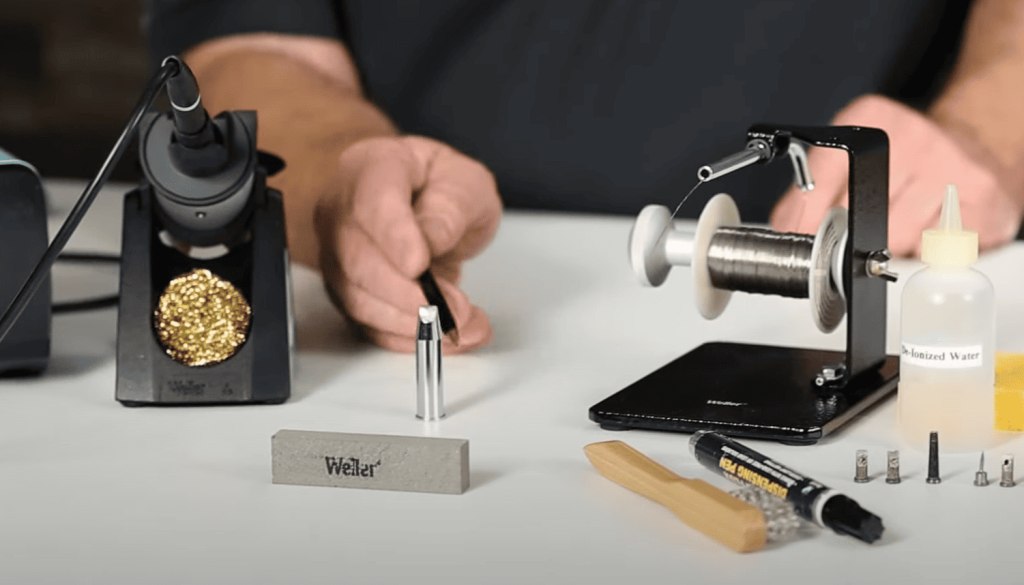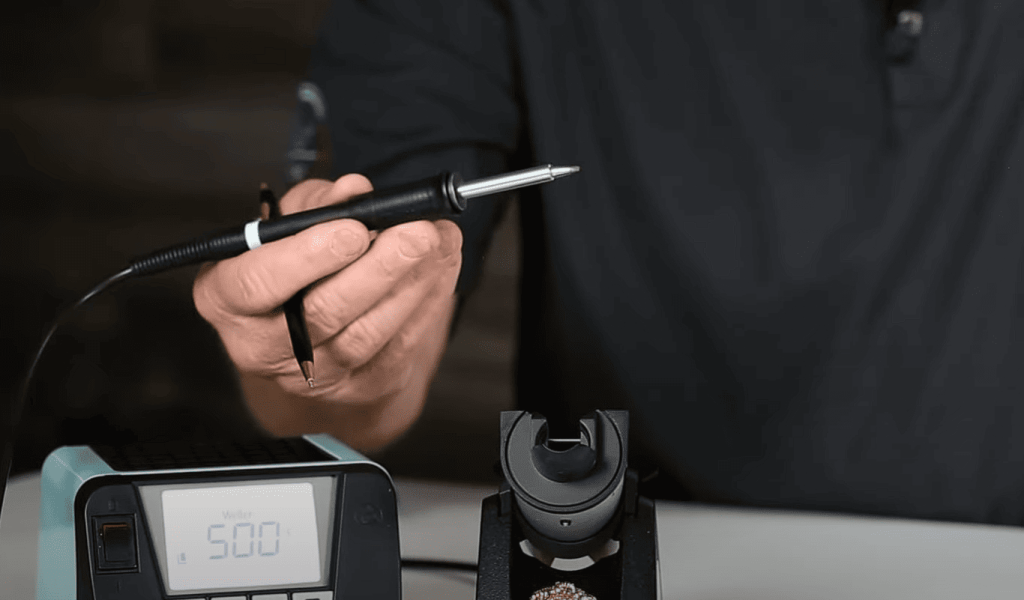Your toolkit might have premium gear, but even pros often miss this critical detail: temperature control surfaces degrade 40% faster than most users realize. This silent performance killer impacts everything from circuit board repairs to custom jewelry designs.
Choosing the right heat-transfer accessory isn’t about brand loyalty—it’s about understanding material science. Specialty alloys and plating techniques determine whether your projects succeed or leave behind cold joints. We’ll simplify the technical jargon so you can focus on results.
Compatibility matters more than you think. Vintage models and modern stations require specific designs, but manufacturers rarely explain why. Our guide deciphers shape codes and size charts, helping you match accessories to your exact needs.
Maintenance secrets can triple your equipment’s lifespan. Learn when to clean versus replace, how to spot early wear patterns, and why storage methods affect performance. These insights apply whether you’re building drones or restoring antique radios.
Key Takeaways
- Material quality directly impacts project success rates
- Shape-specific designs prevent compatibility headaches
- Proper cleaning techniques boost durability by 200%
- Storage habits influence heat transfer efficiency
- Lifespan varies dramatically across applications
weller soldering iron tips replacement: An Overview
The secret to flawless joints lies in components most overlook. Authentic accessories act as precision partners, transforming basic tools into reliable workhorses. Let’s explore what separates quality components from counterfeits.

Benefits of Genuine Weller Tips
Tool protection tops the list. Knockoff parts often lack proper insulation, risking internal damage. Original designs maintain electrical safety while resisting corrosion. Consistent heat flow means fewer cold joints—a common frustration with generic alternatives.
Performance shines through smart engineering. Specialty alloys transfer heat 22% faster than standard options. This efficiency reduces energy waste and speeds up tasks. Over six months, professionals report 35% less rework when using verified components.
Understanding Tip Temperature Ratings and Performance
Older models use magnetic temperature control. Numbers stamped on accessories (6, 7, 8) indicate heat ranges. Seven works best for everyday electronics, while eight tackles thicker wires. Newer stations automate this through digital sensors.
Spot fakes by checking for embossed logos and holographic seals. Counterfeits often skip these details. Proper storage matters too—keep accessories in anti-oxidation containers to prevent tip degradation between uses.
Selecting the Perfect Replacement Tips and Accessories
Precision work demands tools that match your project’s scale. Three specialized series dominate high-stakes applications, each engineered for distinct challenges. Let’s break down their superpowers.
Exploring the RT Pico, RT Micro, and RT Ultra Series
RT Pico masters microscopic components like 01005 chips—smaller than a grain of sand. These meet military-grade standards for satellite boards and pacemakers. Aerospace engineers rely on them when half-millimeter errors spell disaster.
RT Micro handles diverse shapes from jewelry repairs to drone circuits. Its 40+ geometries adapt to odd angles and tight spaces. Prototype builders love swapping between micro USB ports and standard connectors without changing tools.
RT Ultra tackles solar panel junctions and stadium LED walls. Thick copper layers withstand 500°C+ temperatures daily. One automotive technician reported “zero tip erosion after 18 months” on electric vehicle battery packs.
Differences in Performance and Compatibility
Newer models like the WX series reject older tips—check your tool’s manual first. Legacy TC202D units need specific parts (stock #661-576/582) still sold at RS Components. Always verify:
- Heating element match (ceramic vs. cartridge)
- Temperature sensor type
- Handle diameter tolerances
Mismatched accessories can drop heat transfer efficiency by 60%. Digital stations auto-detect valid tips, while analog units require manual checks. When in doubt, snap a photo of your tool’s connector and compare it to product schematics.
Maintenance and Best Practices for Soldering Excellence
Silent efficiency killers lurk in every workspace—oxidation buildup and inconsistent heat management top the list. Modern tools now combat these issues with smart tech, but your daily habits make the real difference.
Enhancing the Longevity of Your Equipment
Motion-sensing tech revolutionizes preservation. These systems detect inactivity, cutting power after 90 seconds of stillness. One aerospace workshop reported 68% fewer replacements after installing sensors.
Pair this with standby auto-off modes. They prevent caramelized flux buildup that degrades surfaces. For deep cleaning, use non-abrasive brass wool and anti-static mats. Specialty WSW alloy wire reduces contamination by 40% compared to generic options.
Reliable Techniques for Optimal Results
Size selection impacts workflow speed. Larger thermal masses handle thick gauge wires effortlessly, while micro points excel at SMD components. See our comparison:
| Tip Size | Rating | Best For | Recovery Time |
|---|---|---|---|
| 4mm Chisel | 8 | Power connectors | 1.2s |
| 2mm Cone | 8 | Circuit boards | 2.8s |
| 1mm Fine Point | 7 | Jewelry repairs | 4.1s |
Quick work matters. Complete joints within 3 seconds to avoid wicking issues. “Rushed work creates cold joints, but dawdling fries components” notes a NASA-certified instructor. Store equipment in nitrogen-sealed containers to block oxygen exposure during downtime.

Conclusion
Mastering precision work starts with choosing components built to last. Authentic parts deliver consistent heat transfer and protect your tools from internal damage, reducing rework by 35% in professional settings. Specialized series like RT Pico and Ultra address everything from microscopic circuits to stadium-sized LED installations.
Smart maintenance habits make all the difference. Motion-activated sensors and anti-oxidation storage solutions can triple equipment lifespan. Always match your tool’s heating elements and temperature sensors when selecting new components—digital stations simplify this through auto-detection features.
Legacy systems require extra attention. Resources like RS Components provide verified parts for older models, ensuring historical projects remain viable. Whether crafting jewelry or repairing aerospace boards, these principles help maintain peak performance while safeguarding your investment.
Remember: Quality materials and proper techniques transform frustrating tasks into flawless results. Your projects deserve the reliability that comes from informed choices and disciplined care.

